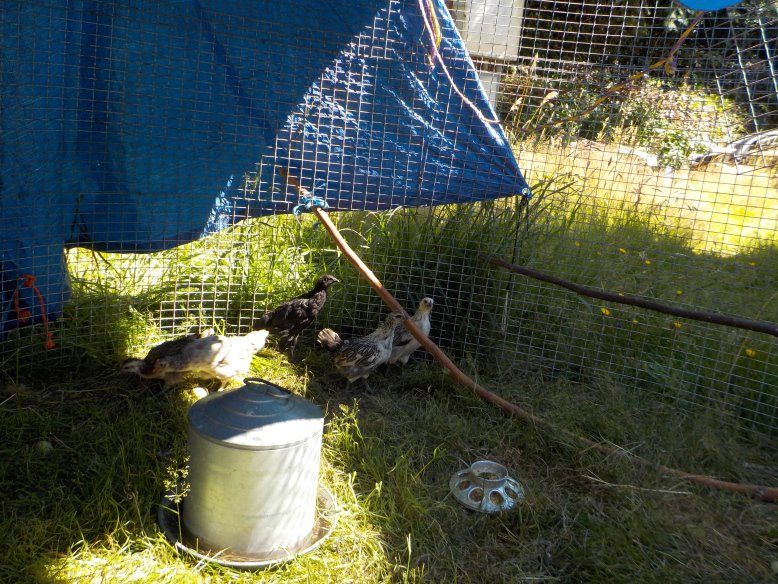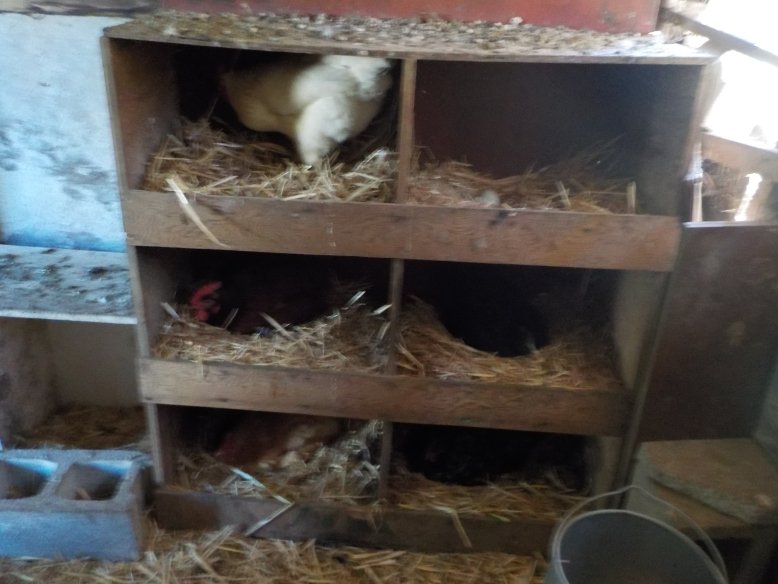There are a lot of birds hanging out around Leafhopper Farm, and most of them are chickens! We’re raising our final chicks who hatched out in mid June. There are 5 little chicks in our movable round pen. Letting a mother hen hatch out chicks is fun, but also unpredictable in many ways. Since all these chicks are also hybrids, there laying productivity is less then that of their pure-bred layer hens. Still, they do lay eggs, and we’re not working towards industrial scale production.

All of the adult hens find their way to the nest boxes, and it looks like we should start building more! There’s a plan to resurrect an old tool trailer on the property, transforming it into a portable coop for the farm. The old standing coop is full of rat holes and seems too unstable structurally to continue as a safe place for the hens.

We’re really excited about expanding our flock over the next few years from an average of 20 layers to about 50. One portable coop will start us in that direction, but another will have to be built to hold the numbers in time. For now, the ladies are spending the summer in their familiar home, utilizing structures already in place, including the nest boxes.
We lost one of our three Ayam Cemani roosters last month to what was most likely an owl. Rock-star chose to live outside the coop. I explained to him the risks, and he knew what was at stake. It’s one of only two birds we’ve lost to predators this year, and the other was also lost to an owl. There’s a Bard Owl who likes to come sit in one of our red cedars right outside the hen house hoping for a straggler. I love the owls, and understand that they need to eat too. So, I encourage them to be rodent hunters and it’s my job to keep the flock safely shut in the coop at night, out of the talons of our carnivorous birds of prey.
In the young flock of five babes, there is a black bird. I am hopeful that it’s a female Cemani, as we need more hens to breed! I’m still trying to fix the incubator, which burned out it’s fan last winter, ruining the last batch of eggs I tried to manually hatch. I’d like to start one more batch of babes to raise through the fall, but that might have to wait till next spring.
The chickens have been a staple livestock system of Leafhopper Farm since our first year in 2013. Birds are worth their cost in organic feed, as they offer eggs, meat, and gleaning of the land. This fall I will be replanting the native plants out of the kitchen garden, then turning the flock loose on my garden beds to clean out the bugs and their eggs from the rich earth. I’ll get a pest free garden, ready for spring planting, and the chickens will get all that rich bug matter to eat and enjoy.
I wonder why people don’t add the value of insect gleaning and soil tilling into the numbers game of making chickens an affordable system. Many of my fellow chicken farmers talk of how expensive feed is, and the numbers rarely come out beyond a break even scheme. I find that, though the organic grain is costly, my hens eat less of it in the warm months because they enjoy rich pasture, made even richer by their bug gleaning and tillage. I try to re-seed more aggressively scratched out areas with diverse pasture species like clover, plantain, and even some grains like rye and wheat. In winter, I throw the grain out on the landscape more often to encourage continued earth turning under the feet of the hens. The grain they do not pick up usually re-seeds too.
Perhaps if we chicken growers look more closely at all the benefits of our chickens, we might find greater payback in the work the birds do to the land, and continue to enhance pasture for our birds and other grazing animals that can also enjoy the fertility of our organic fields. In the mean time, chickens abound and we’re loving the eggs with rich yellow yolks filled with organic protein.
Please Upvote, Resteem & Follow if you'd like to support @leafhopperfarm
